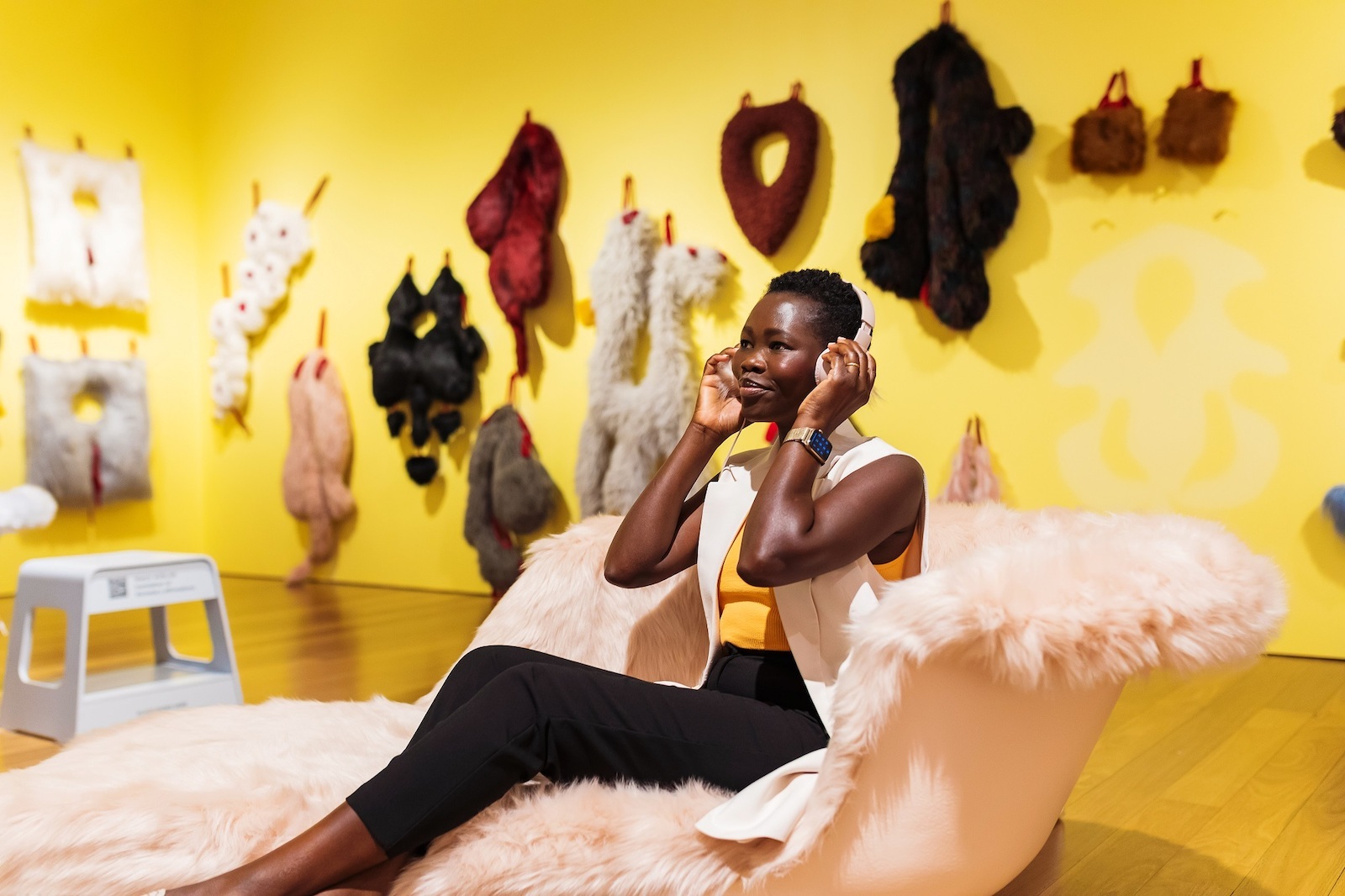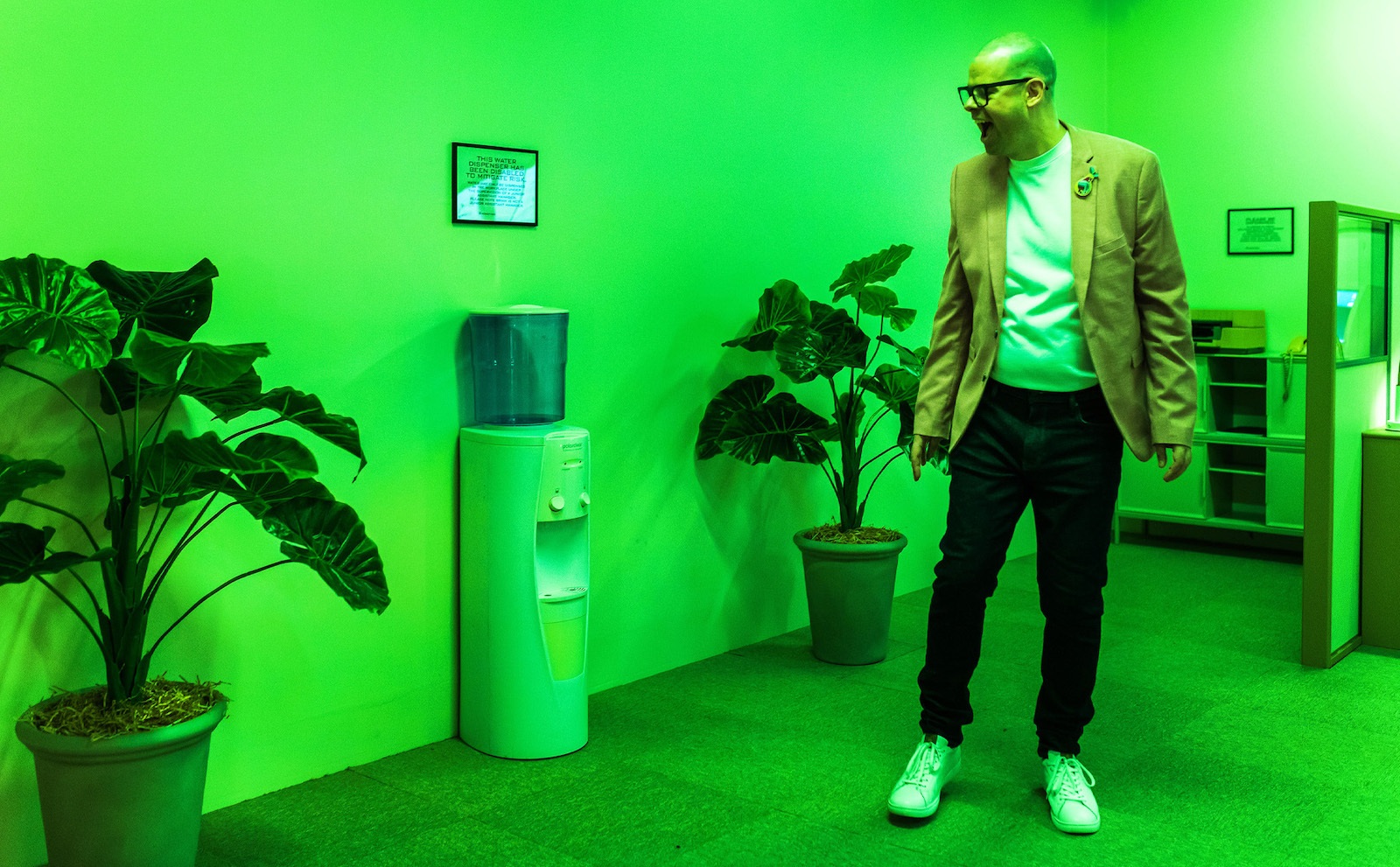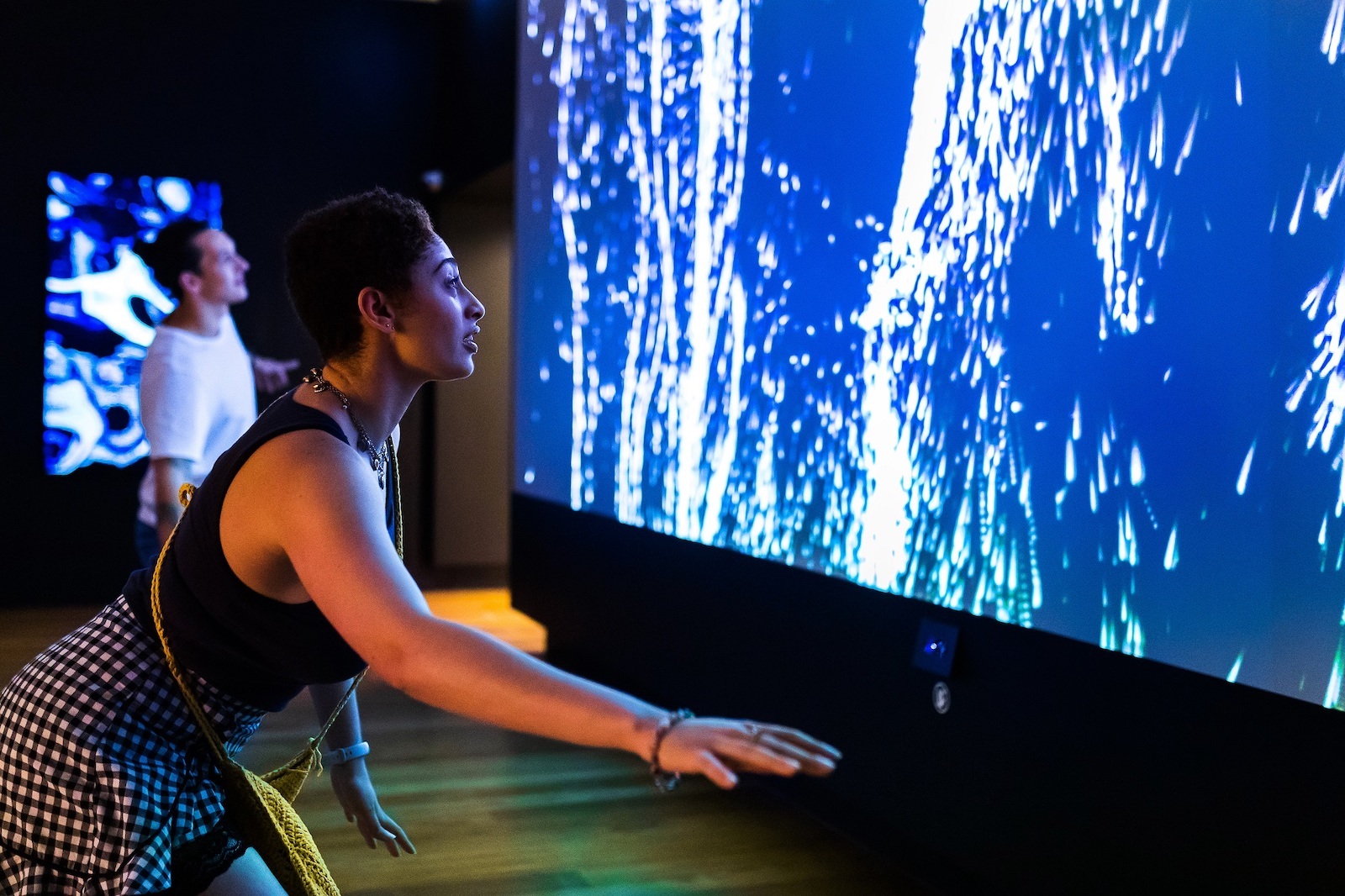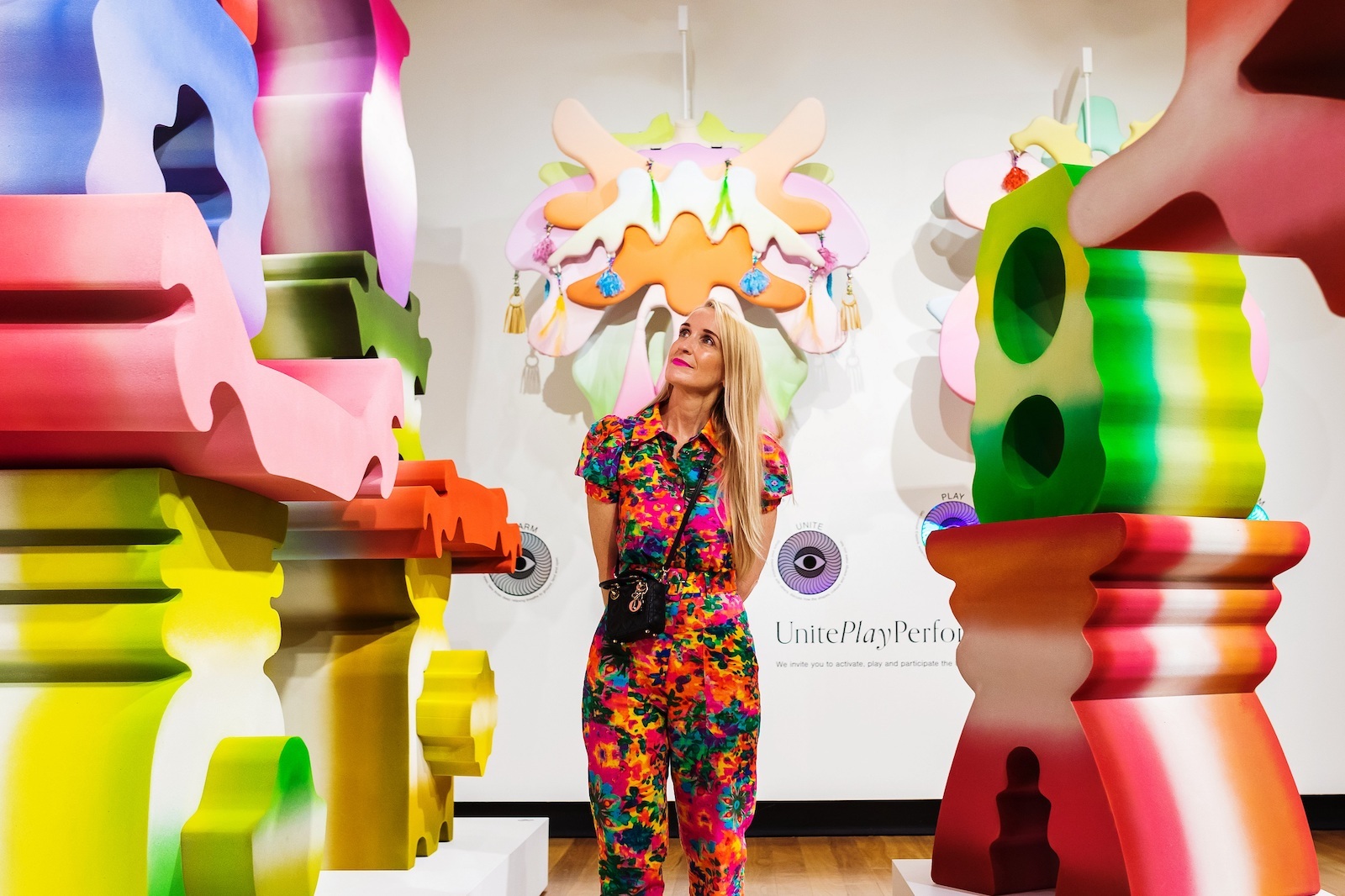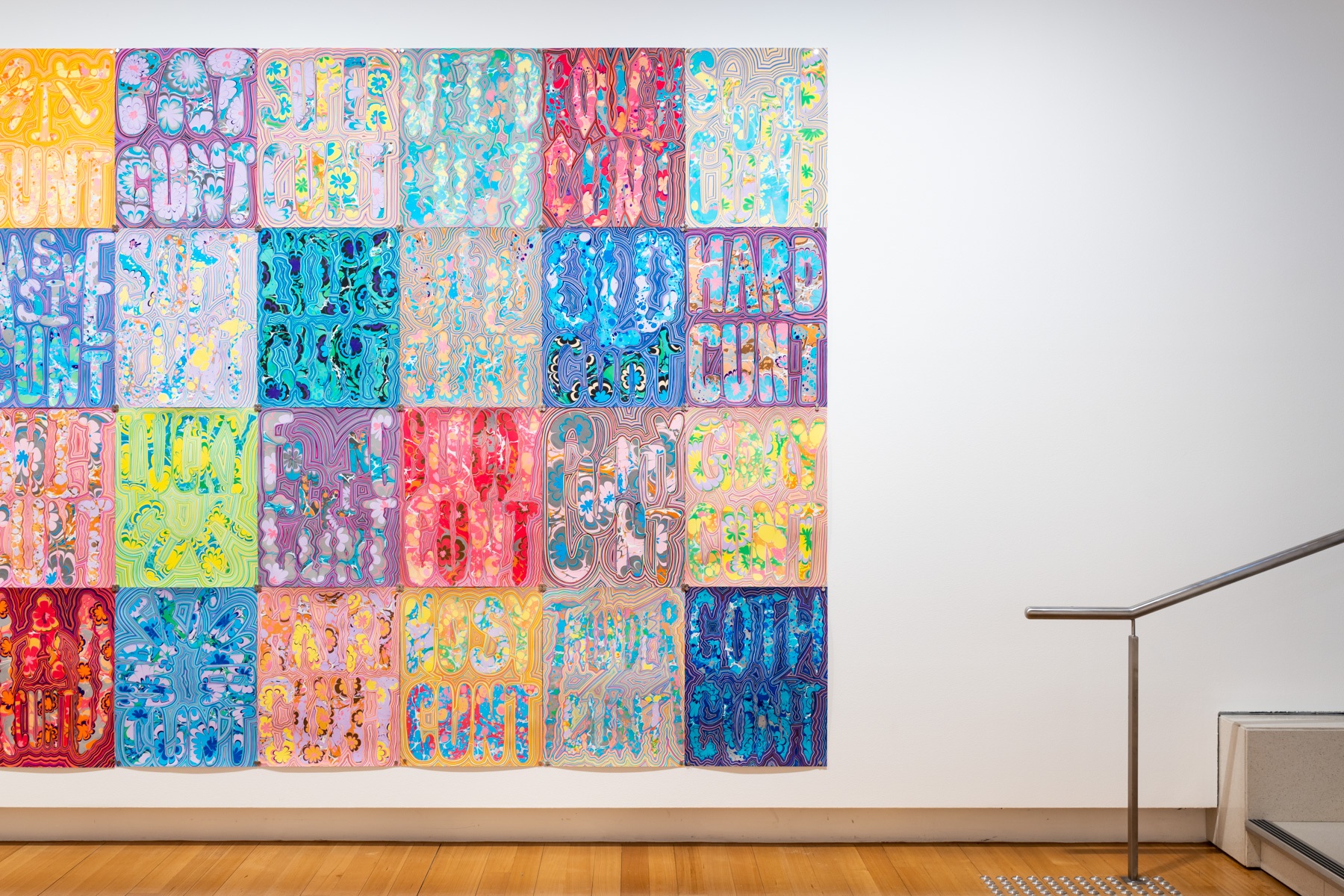Interactive art exhibitions are, almost by design, a mixed bag. The best ones are engaging and ephemeral, while the most disappointing remind us that the wisdom of crowds isn’t a shortcut to artistic merit. Play Moves, running until April 16 at the Museum of Brisbane, aims to split the difference, offering family-friendly fun alongside works aimed squarely at an adult audience.
Play Moves features work by six artists and collectives spread across just five rooms. Despite its compact size, the exhibition boasts a surprising range. There’s a house-sized loom you can weave on (Archi-Loom, 2022), a digital ecosystem that responds to body movement (Digital Playground, 2022), and squeezable monster tentacles (The Tentacle Procession, 2022) to name just a few.
The colourful Archi-Loom by Melbourne’s Slow Art Collective serves as the exhibition’s entryway. A large hut of bamboo and rope, it’s both a rudimentary shelter and a giant loom big enough to walk through. Scraps of yarn are provided, so you can weave, tie, braid and loop them together however you like. Made using recycled materials, Archi-Loom harkens back to older, more sustainable methods of production. It’s also the most traditionally interactive piece of the show: the audience is invited to help create the work using scaffolding provided by the artists.
The following exhibits take visitor participation in two very different directions. Brisbane-based artist Michelle Vine (who is also an advisor to Lemonade) presents a trio of works based around the senses of touch and hearing. To have and to hold (2021–22) is a series of curvaceous plush accessories to don as you wander the room. Like Cookie Monster if he transformed into a fashionable boa, these alien objects are organic and otherworldly, yet somehow comforting and familiar.
Alongside these are two sculptures: a shag-carpeted bathtub (Affirmation Tub 2, 2021) and chaise longue (Affirmation Tub 3, 2022) where you can lie down, pop on some fluffy headphones, and listen to Vine compliment you via secretive, whispered affirmations. It’s the most direct approach to Matisse’s goal of creating art that acts “like a good armchair” for the mind and mood. And unlike most interactive art, it requires you to do absolutely nothing. The artistry is all in the installation’s ability to help you relax, and whether it’s the comfy carpet, Vine’s ASMR-adjacent vocals, or just the insight that sitting down in an art gallery is a rare treat, it’s very effective.
In the same room, you’ll also find objects from UnitePlayPerform, a travelling series of artistic ‘playshops’ run by Sydney artist ØFFËRINGŠ. The installation consists of soft foam wearable Utopia Spirit Skins (2022) and hard foam sculptures called Hyper Temples (2022), along with a specially designed soundscape, Song Spell for Humanity(2022).
Unlike the rest of Play Moves, UnitePlayPerform is filled with signs telling you not to touch the artworks. It’s an odd choice for an interactive exhibition with the theme of play, but there is an explanation. MoB is hosting some playshops in late March where participants will get to use these artworks in multi-sensory group activities. Unfortunately, the signage doesn’t make this crucial context explicit, leaving visitors to wonder why exactly these pieces have been included in the lineup. Meanwhile, the accompanying soundscape is all too easily drowned out by noise from adjacent rooms, preventing it from elevating the experience.
The undoubted highlight of the show is Escape from Monotony (2022), a ‘reverse escape room’ by Brisbane collective Counterpilot. At first glance, it’s a re-creation of a late-1980s office belonging to Monotoné Industries—all white walls, beige desks, and snarky reminders from management. As you explore, it gradually becomes clear there’s more to this empty office than meets the eye. There are coffee cup stains on the wall, musical drawers, and a pot plant that might have just moved when you weren’t looking.
Each strange detail points to a different hidden secret and each seemingly random occurrence is triggered by people interacting with the space. Like a child fiddling with a light switch, it’s impossible not to smile when you realise the mug you set down just turned the entire room purple. As in any good escape room, there’s the thrill of discovery around every corner, but without the pesky locked doors and time pressure. The cheeky humour and consequence-free mayhem owe as much to video games as they do to real-world ones. Worth a visit on its own, Escape from Monotony is all about tinkering with cause and effect. If you play around enough, you’ll find everything here makes more sense than what goes on in most real offices.
Each installation at Play Moves is interactive in a different way, and each spurs a different impulse, from exploration to relaxation. Placed together for the exhibition, the contrast between the works is more striking than their similarities. It’s a timely reminder that interactive art is a much broader category than it seems.
This review was kindly guest edited by Pamela See.
Kit Kriewaldt is a freelance editor and writer based in Brisbane.


